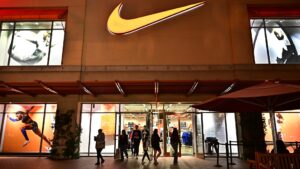Nike’s Strategic Shift: New Leadership, New Vision
In the fast-paced world of retail, even giants like Nike can find themselves needing a pivot. Under the new leadership of Elliott Hill, Nike is set to embark on a crucial turnaround journey as the company grapples with challenges from deep discounting and declining revenues. Let’s explore the latest developments and what they mean for stakeholders in the sneaker and sports apparel space.
The Challenge Ahead
Nike’s struggles have not gone unnoticed. With sales falling roughly 8% to $12.35 billion in the most recent quarter and net income shrinking from $1.58 billion to $1.16 billion, the company must act decisively to regain momentum. During a recent earnings call, Hill, who has a long history with the brand dating back to his internship in the 1980s, expressed a commitment to reinvigorating Nike’s image and profitability.
“What I’ve seen is traffic in Nike direct, digital and physical, has softened because we lack newness in product and we’re not delivering inspiring stories,” Hill acknowledged. To counteract this trend, Nike will focus on re-establishing itself in the marketplace by moving away from the heavy promotions that have diluted brand value and adversely affected profit margins.
A Shift to Full-Price Sales
One of Hill’s key strategies is to restore a full-price model online while aggressively liquidating older inventory through less profitable channels. The challenge lies in implementing this strategy while also ensuring that key wholesale partners feel supported and valued. Hill has pledged to rebuild relationships with partners such as Foot Locker, JD Sports, and Dick’s Sporting Goods by investing in mutual success rather than merely pushing product sales.
“We will win when our partners win,” Hill stated emphatically—signaling a sharp departure from his predecessor’s approach, which overly emphasized driving online sales at the expense of traditional wholesale relationships.
Returning to Core Values
Another critical observation made by Hill was the need to reconnect with Nike’s roots—athletics and performance. He remarked, “We lost our obsession with sport,” highlighting a shift away from core brand values that have historically resonated with consumers. This realization underscores a broader trend where lifestyle brands have overshadowed Nike’s performance-driven legacy, enabling competitors to gain ground.
To address this, Nike plans to shift its focus away from just a few signature styles that have flooded the market and risk becoming ubiquitous. Hill aims to re-establish Nike’s reputation for innovation and performance, promising to limit supply strategically to boost desirability.
Global Revenue Insights
While the challenges are evident, Hill’s recent strategy showcases promise. When comparing geographic revenues, North America saw a decline but better-than-expected numbers from the $5.18 billion reported against $5.01 billion anticipated. In Europe, Middle East, and Africa, numbers also held up better than expectations. However, the 8% sales slide in China signals that not all markets are responding similarly, which could indicate regional challenges that require tailored strategies.
Challenges with Inventory and Costs
Concerns related to inventory management persist, with Nike’s stock remaining at an alarming $8 billion. Despite managing to keep units flat compared to last year, the profitability of this inventory depends highly on market conditions and sales trends. The current economic climate calls for a meticulous reevaluation of supply chain strategies to prevent further stagnation.
A Promising Future
Despite facing an uphill battle, there are bright spots. Hill recently announced the renewal of Nike’s contract with the NFL, solidifying its role as the exclusive uniform provider for the league until 2038. This renewal, along with significant partnerships with major sports leagues, gives Nike a platform to showcase its renewed commitment to innovation in sportswear.
At Extreme Investor Network, we believe in the power of strategic adaptation. Nike’s turnaround plan under Elliott Hill’s leadership offers critical insights into how companies can pivot in response to market changes while remaining true to their core identities. As Hill himself stated, “In a moment where our team, brand and business are being challenged, my singular focus is to help get us back on track, to get back to winning.”
Stay tuned to our network for ongoing analyses and updates on Nike and the broader retail landscape as these strategies unfold. The stakes are high, but with innovation and collaboration, Nike can reclaim its spot at the top of the sportswear market.

